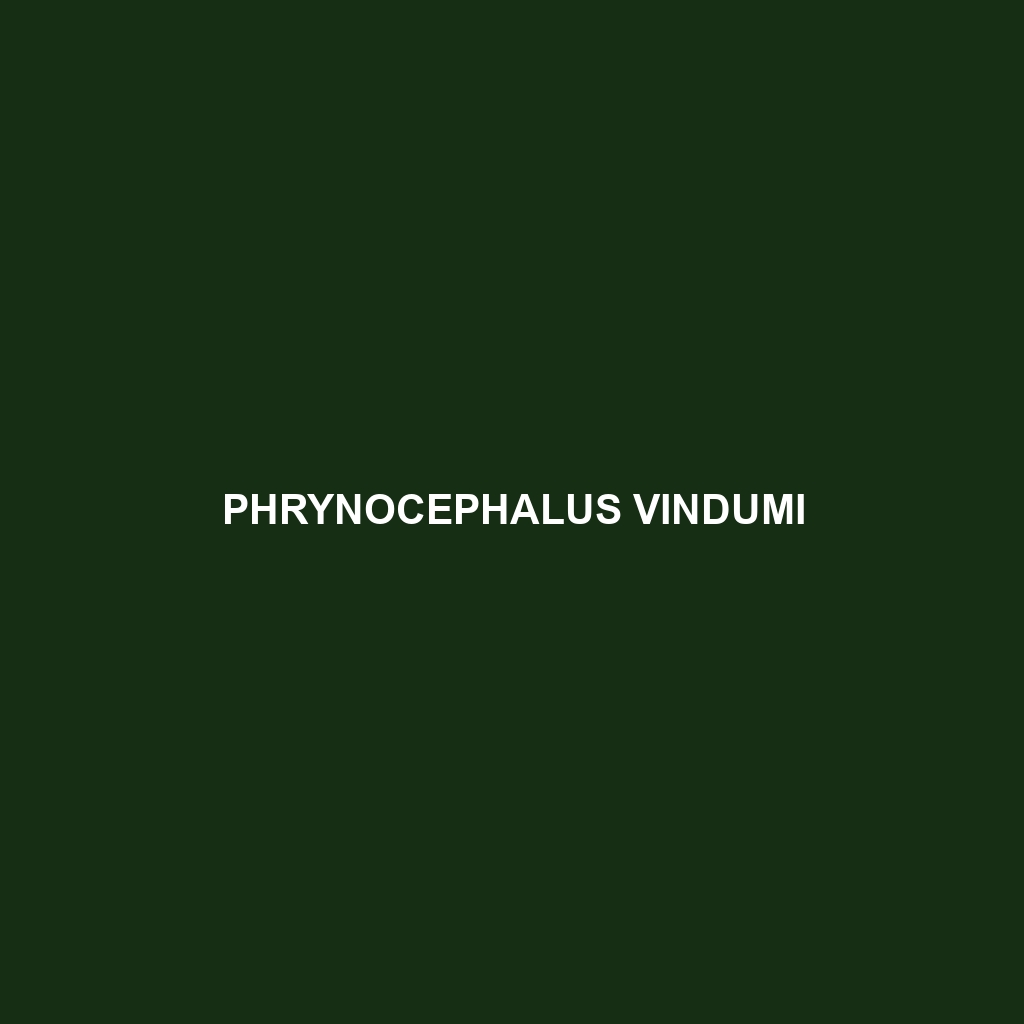Common Name
Phrynocephalus vindumi
Scientific Name
Phrynocephalus vindumi
Habitat
The Phrynocephalus vindumi is primarily found in arid and semi-arid regions, notably across parts of Central Asia, particularly in areas characterized by steppe and grassland ecosystems. These lizards are typically located in rocky terrains, sandy dunes, and open savannas, where they can easily camouflage against their surroundings. The climate in these habitats can vary significantly, with hot summers and cold winters, creating a challenging environment that they have adapted to by taking refuge in burrows or under rocks during extreme temperatures. Their ability to thrive in such diverse ecosystems makes them a fascinating subject of study in relation to their adaptability and ecological significance.
Physical Characteristics
Phrynocephalus vindumi is known for its striking appearance. Adults typically reach a length of 10 to 15 centimeters. Their body is flattened and broad, which aids in thermoregulation. The coloration varies widely, often featuring a mix of browns, tans, and yellows, allowing for camouflage against the sandy and rocky substrates. One distinguishing feature is the presence of spiny scales that rise along their back and tail, adding an element of protection against predators. Their large eyes, adapted for vision in bright light, also enhance their hunting capabilities during daylight hours, marking them as intriguing reptiles.
Behavior
The behavior of Phrynocephalus vindumi is particularly captivating, especially regarding its social interactions and adaptation to its environment. These lizards are predominantly diurnal, actively foraging during the day. They exhibit unique territorial behaviors, often engaging in displays of dominance to assert their presence in a given area. Mating rituals in this species involve elaborate courtship displays, where males will perform head-bobbing and push-up movements to attract females. During colder seasons, they are known to hibernate, which is crucial for their survival and plays a role in their reproductive cycle.
Diet
Phrynocephalus vindumi is primarily an insectivore, feeding mostly on a variety of insects such as ants, beetles, and grasshoppers. Their diet also includes small invertebrates, which they hunt with remarkable agility. They possess a unique feeding method where they use their tongue to flick and capture prey quickly. This specialized diet is vital for their energy needs, particularly during the active months when they are looking to build reserves for the cooler seasons.
Reproduction
The reproductive cycle of Phrynocephalus vindumi is marked by a seasonal mating period that typically occurs in spring. After courtship, females lay clutches of approximately 3 to 10 eggs, depending on the environmental conditions and the female’s health. The eggs are deposited in sandy burrows, where they are incubated by the warm temperatures of their surroundings. The gestation period lasts roughly 2 to 3 months, after which the hatchlings emerge. Parental care is minimal, as the young reptiles are independent from birth, relying on their instincts to survive in the wild.
Conservation Status
The conservation status of Phrynocephalus vindumi is currently listed as of “Least Concern” according to the IUCN Red List. They are not facing immediate threats; however, habitat loss due to agricultural expansion and climate change poses significant risks. Conservation efforts are important to monitor their populations and ensure their habitats are preserved, which is essential for maintaining ecological balance in their native regions.
Interesting Facts
One of the most interesting facts about Phrynocephalus vindumi is its remarkable ability to change color based on environmental conditions. This capability not only aids in camouflage but also helps regulate temperature by reflecting or absorbing sunlight. Additionally, these lizards have developed a fascinating means of communication through body language and physical displays, highlighting their social structures. Their resilience in adapting to harsh climates makes them a subject of interest for ecological studies.
